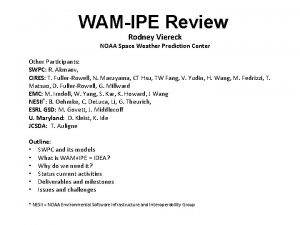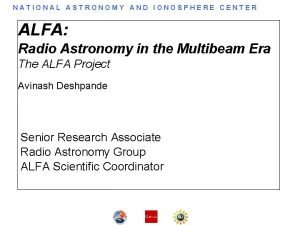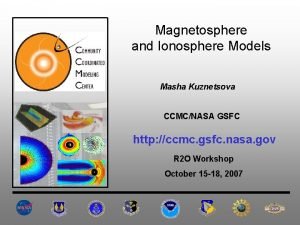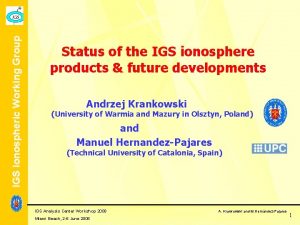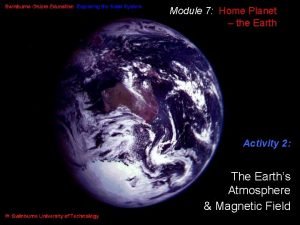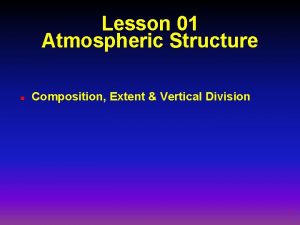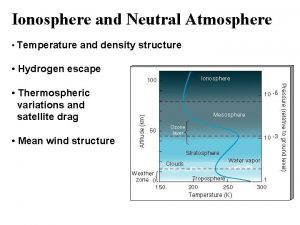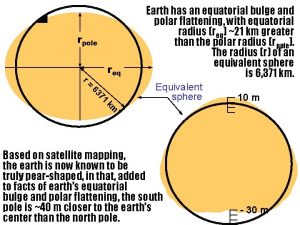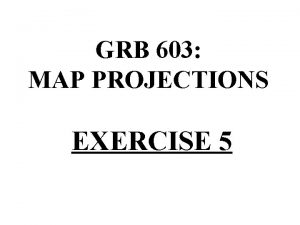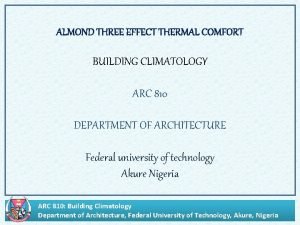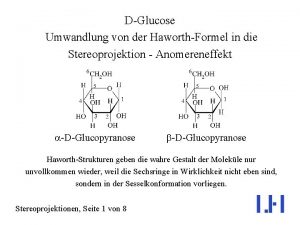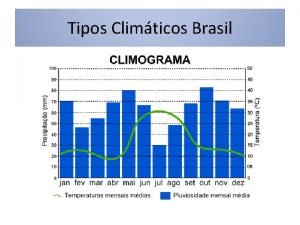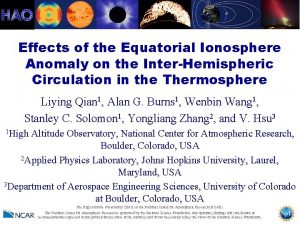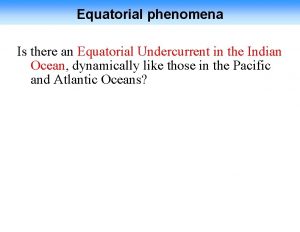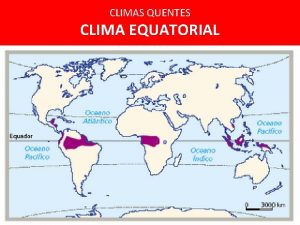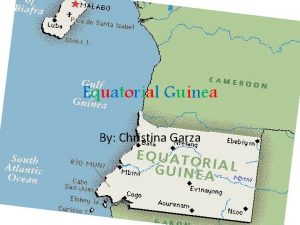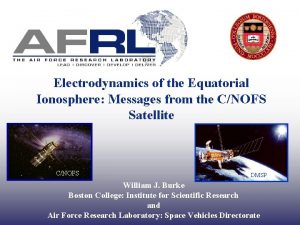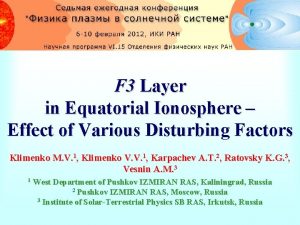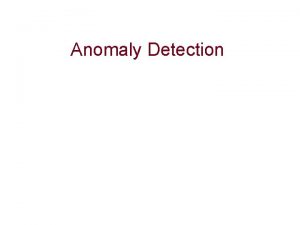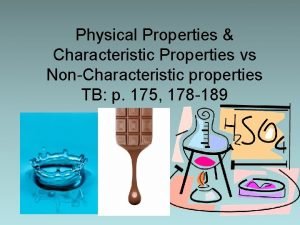The Ionosphere Equatorial Anomaly ionogram Ionosphere Properties and






















- Slides: 22

The Ionosphere Equatorial Anomaly


ionogram

Ionosphere Properties and Structure • 103 to 106 electron – ion pairs in every cubic cm • Sources of ionization: both electromagnetic radiation and energetic particles • Reflects, or retards radio waves • layered structure • Variations on all time scales from ms to solar cycle

Neutral and charged particles in the ionosphere

Charged and Neutral Structure

Rocket Flight data in 1995

• E-Region: • The region between about 95 and 150 km above the Earth that marks the height of the regular daytime E-layer. Other subdivisions, isolating separate layers of irregular occurrence within this region, are also labeled with an E prefix, such as the thick layer, E 2, and a highly variable thin layer, Sporadic E. Ions in this region are mainly O 2+.

• F-Region: • The region above about 150 km in which the important reflecting layer, F 2, is found. Other layers in this region are also described using the prefix F, such as a temperate-latitude regular stratification, F 1, and a low-latitude, semi-regular stratification, F 1. 5. Ions in the lower part of the Flayer are mainly NO+ and are predominantly O+ in the upper part. The F-layer is the region of primary interest to radio communications.

• Topside: • This part of the Ionosphere starts at the height of the maximum density of the F 2 layer of the Ionosphere and extends upward with decreasing density to a transition height where O+ ions become less numerous than H+ and He+. The transition height varies but seldom drops below 500 km at night or 800 km in the daytime, although it may lie as high as 1100 km. Above the transition height, the weak ionization has little influence on radio signals.

Why are there free electrons and ions in the ionosphere, and not in the lower atmosphere? • Ion-electron pair sources: uv and xuv solar radiation energetic electron bombardment electron+ ion atom or molecule Photoelectric Emission uv radiation energetic particle Impact ionization

Ionospheric Variability • Lightning causes – ms variations • Aurora and solar events cause changes in seconds, lasting sometimes hours • Atmospheric Temperature and waves cause ionospheric variations • Electric and magnetic fields cause variability • Earth’s rotation (no uv at night!)

Day to Night Variability • Solar uv only effective on sunlit side • After sunset ions recombine with electrons at lower altitudes (D and E regions) • F-region remains strongly ionized at night because recombination is much slower • Nighttime E-region goes away except during aurora


How do electric and magnetic fields affect the ionosphere? E field B field (out) Force = Charge * (

So the whole ionosphere drifts when electric fields are present View from above N-Pole

Definition of the Ionospheric Regions • For convenience, we divide the Ionosphere into four broad regions called D, E, F, and topside. These regions may be further divided into several regularly occurring layers, such as F 1 or F 2. • D-Region: • The region between about 75 and 95 km above the Earth in which the (relatively weak) ionization is mainly responsible for absorption of highfrequency radio waves.


ionogram

So, what about equatorial anomaly? • Near sunset a strong horizontal electric field exists, • which causes the plasma to drift up • This spills down to the off -equatorial latitudes

Aurora

aurora
 Ionosphere height
Ionosphere height Ionosphere
Ionosphere Astronomy
Astronomy Ionosphere
Ionosphere Ionosphere
Ionosphere Ionosphere
Ionosphere Stratosphere altitude
Stratosphere altitude Structure of atmosphere
Structure of atmosphere Ionosphere
Ionosphere Tipos de clima
Tipos de clima Equatorial radius of the earth
Equatorial radius of the earth Equatorial radius of the earth
Equatorial radius of the earth Tan 15
Tan 15 Equatorial climate characteristics
Equatorial climate characteristics Effective temperature nomogram
Effective temperature nomogram Clima natal
Clima natal Fauna of equatorial region
Fauna of equatorial region Sesselkonformation glucose
Sesselkonformation glucose Clima equatorial úmido nordeste
Clima equatorial úmido nordeste Climogramas brasileiros
Climogramas brasileiros Cerclage haubanage rotule
Cerclage haubanage rotule Cote d'ivoire desserts
Cote d'ivoire desserts Climes calids
Climes calids
